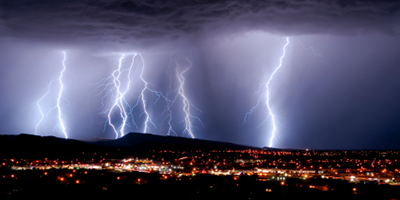A Crackling in the Air
After centuries of observation, lightning is still a puzzle: it is not yet fully known how thunderclouds acquire electrical charge and what initiates the discharge. Two factors are thought to be important: small water or ice particles inside clouds (so-called hydrometeors) and showers of electrons created by cosmic rays. In Physical Review Letters, Alex Gurevich at the Russian Academy of Science, and Anatoly Karashtin at the Radiophysical Research Institute, Nizhny Novgorod, Russia, report a new analysis of radio pulses emitted at the onset of lightning strikes, suggesting how lightning initiation can arise from a combination of the two factors. Specifically, they show microdischarges at hydrometeors can amplify cosmic-ray-initiated breakdown.
The authors analyzed the temporal structure of radio emissions from 3800 lightning strikes in Russia and Kazakhstan. Hundreds or thousands of short and rather strong radio pulses occur as the lightning is preparing to strike and their shape matches models of electrical breakdown triggered by electron showers generated by energetic cosmic rays. The amplitude of the radio emissions is consistent with cosmic-ray particles having an energy around 1017 electron volts (eV), but cosmic rays of this energy are too rare to justify the measured data.
Gurevich and Karashtin suggest that hydrometeors are becoming electrically polarized as the strong electric field inside the cloud builds up. As the field reaches a threshold, microdischarges occur near the droplets. These microdischarges are initiated and synchronized by a large shower of electrons generated by a runaway breakdown avalanche triggered by cosmic rays. In this case, cosmic-ray particles of energy 1012 eV, which are much more common, are sufficient to explain the observed radio pulse amplitudes prior to the lightning discharge. – David Voss





